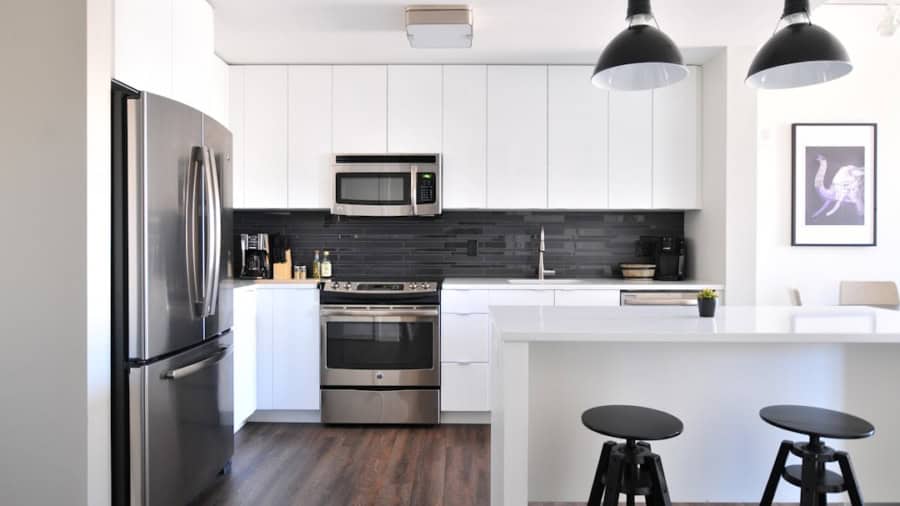The advent of smart home technology has revolutionized the way we interact with our living spaces, offering unprecedented convenience and control. Smart home security systems are at the forefront of this transformation, integrating advanced technologies to enhance safety and peace of mind. These systems encompass a wide range of devices, including smart cameras, doorbell cameras, motion sensors, and smart locks, all designed to provide real-time monitoring and alerts.
The appeal of these systems lies not only in their ability to deter intruders but also in their capacity to allow homeowners to manage their security remotely through smartphones and other connected devices. As the demand for smart home security solutions continues to grow, so does the complexity of the systems themselves. Homeowners are increasingly looking for integrated solutions that can communicate with one another, creating a cohesive security network.
This interconnectedness, while beneficial for user experience, also introduces new challenges, particularly in the realm of cybersecurity.
As we delve deeper into the intricacies of smart home security systems, it becomes evident that safeguarding these devices against cyber threats is as important as protecting physical property.
Key Takeaways
- Smart home security systems are designed to protect homes from physical and digital threats, providing peace of mind to homeowners.
- Cyber threats in smart homes can include hacking of devices, unauthorized access to personal data, and even physical security breaches.
- Smart home security systems play a crucial role in safeguarding against cyber threats by using encryption, secure authentication, and regular software updates.
- Features such as end-to-end encryption, multi-factor authentication, and secure communication protocols enhance the cybersecurity of smart home security systems.
- Best practices for securing smart home devices and networks include using strong passwords, keeping software updated, and being cautious about sharing personal information online.
Understanding Cyber Threats in the Smart Home
Vulnerabilities in Smart Devices
One common method employed by hackers is known as “credential stuffing,” where they use stolen usernames and passwords from one service to gain access to another. This is particularly concerning in smart homes, where multiple devices may rely on similar login credentials, making it easier for attackers to infiltrate entire networks.
Malware Threats in IoT Devices
Another significant threat comes from malware specifically designed to target Internet of Things (IoT) devices. These malicious programs can be introduced through various means, such as phishing emails or compromised applications. Once installed, malware can take control of smart devices, allowing hackers to spy on users, steal sensitive information, or even launch attacks on other connected systems.
The Interconnected Nature of Smart Home Devices
The interconnected nature of smart home devices means that a single compromised device can serve as a gateway for broader network infiltration, amplifying the potential damage. This highlights the importance of taking proactive measures to secure smart home devices and protect against cyber threats.
The Role of Smart Home Security Systems in Protecting Against Cyber Threats
Smart home security systems play a pivotal role in mitigating cyber threats by implementing various protective measures designed to safeguard both devices and networks. One of the primary functions of these systems is to provide real-time monitoring and alerts, enabling homeowners to respond swiftly to any suspicious activity. For instance, many smart cameras come equipped with motion detection capabilities that can send instant notifications to users’ smartphones when unusual movement is detected.
This immediate feedback loop allows homeowners to take action before a potential breach escalates.
Encryption serves as a critical barrier against eavesdropping and unauthorized access, ensuring that sensitive information remains confidential.
Additionally, some systems offer features such as two-factor authentication (2FA), which adds an extra layer of security by requiring users to verify their identity through a secondary method, such as a text message or authentication app. By employing these strategies, smart home security systems significantly enhance the overall cybersecurity posture of connected homes.
Features and Technologies That Enhance Cybersecurity in Smart Home Security Systems
To effectively combat cyber threats, smart home security systems are equipped with a variety of features and technologies designed to bolster their defenses. One notable advancement is the use of artificial intelligence (AI) and machine learning algorithms that can analyze patterns in user behavior and detect anomalies indicative of potential security breaches. For example, AI-driven systems can learn the typical activity patterns within a household and flag any deviations that may suggest unauthorized access or tampering.
Another critical feature is the implementation of secure boot processes in smart devices. This technology ensures that only trusted software is loaded during the device’s startup sequence, preventing malicious code from being executed. Additionally, many manufacturers are now adopting secure firmware update mechanisms that allow for seamless updates without compromising device integrity.
These updates often include patches for known vulnerabilities, making it essential for users to keep their devices up-to-date.
Best Practices for Securing Smart Home Devices and Networks
While smart home security systems offer robust protection against cyber threats, homeowners must also take proactive steps to secure their devices and networks effectively. One fundamental practice is changing default passwords on all smart devices immediately after installation. Default passwords are often widely known or easily guessable, making them prime targets for attackers.
By creating strong, unique passwords for each device, users can significantly reduce the risk of unauthorized access. Another essential practice is segmenting the home network. By creating separate networks for smart devices and personal computers or smartphones, homeowners can limit the potential impact of a compromised device.
For instance, if a smart camera is hacked, it would not provide direct access to more sensitive devices like laptops or smartphones on a different network segment. Additionally, enabling network firewalls and regularly monitoring network traffic can help identify unusual activity that may indicate a breach.
Potential Vulnerabilities and Risks in Smart Home Security Systems
Despite advancements in technology and security measures, smart home security systems are not immune to vulnerabilities and risks. One significant concern is the reliance on cloud services for data storage and processing. While cloud computing offers convenience and scalability, it also introduces risks associated with data breaches and service outages.
If a cloud service provider experiences a security incident, sensitive user data could be exposed or compromised. Moreover, many smart devices have limited processing power and memory, which can hinder their ability to implement robust security measures. Some older models may lack essential features such as encryption or regular firmware updates, leaving them susceptible to exploitation.
Additionally, manufacturers may not prioritize security during the design phase, leading to inherent vulnerabilities that can be exploited by cybercriminals. As such, consumers must conduct thorough research before purchasing smart home devices to ensure they are investing in products with strong security features.
The Importance of Regular Updates and Maintenance for Smart Home Security Systems
Regular updates and maintenance are crucial components of maintaining the cybersecurity integrity of smart home security systems. Manufacturers frequently release firmware updates that address known vulnerabilities and enhance device performance. Failing to install these updates can leave devices exposed to threats that have already been mitigated by newer software versions.
Homeowners should establish a routine for checking for updates on all connected devices and enable automatic updates whenever possible. In addition to software updates, physical maintenance of devices is also essential. This includes checking for signs of tampering or damage that could compromise device functionality or security.
Regularly reviewing device settings and permissions can help ensure that only authorized users have access to sensitive features or data. By prioritizing both software updates and physical maintenance, homeowners can significantly reduce their risk exposure in an increasingly complex digital landscape.
The Future of Cybersecurity in Smart Home Security Systems
As smart home technology continues to evolve, so too will the landscape of cybersecurity challenges associated with these systems. The future will likely see an increased emphasis on developing more sophisticated security protocols that leverage emerging technologies such as blockchain for enhanced data integrity and privacy protection. Additionally, as artificial intelligence becomes more prevalent in smart home devices, its application in cybersecurity will likely expand, enabling more proactive threat detection and response capabilities.
Furthermore, consumer awareness regarding cybersecurity will play a pivotal role in shaping the future of smart home security systems. As homeowners become more educated about potential risks and best practices for securing their devices, manufacturers will be compelled to prioritize security features in their product designs. Ultimately, the convergence of technological innovation and consumer demand will drive advancements in cybersecurity measures within smart home ecosystems, ensuring that safety remains at the forefront of this rapidly evolving industry.
If you are interested in learning more about how technology can enhance your home security, you may want to check out this article on the best software for interior design in 2023. Just like smart home security systems, interior design software can help you create a safe and comfortable living environment by utilizing the latest technology.
FAQs
What is a smart home security system?
A smart home security system is a network of interconnected devices and sensors that work together to protect a home from intruders, fire, and other safety hazards. These systems can be controlled and monitored remotely using a smartphone or computer.
How do smart home security systems protect against cyber threats?
Smart home security systems protect against cyber threats by using encryption to secure communication between devices, regularly updating software to patch vulnerabilities, and implementing strong authentication methods to prevent unauthorized access.
What are the potential cyber threats to smart home security systems?
Potential cyber threats to smart home security systems include hacking, malware, phishing attacks, and unauthorized access to the system’s network or devices.
What are some features of smart home security systems that enhance cyber protection?
Features that enhance cyber protection in smart home security systems include secure Wi-Fi networks, encrypted communication between devices, two-factor authentication, and regular software updates to address security vulnerabilities.
Can smart home security systems be hacked?
While no system is completely immune to hacking, smart home security systems can be made more secure by following best practices such as using strong passwords, keeping software updated, and being cautious about granting access to third-party apps and devices.
What should homeowners do to ensure the cyber security of their smart home security systems?
Homeowners should regularly update their system’s software, use strong and unique passwords, enable two-factor authentication, and be cautious about granting access to third-party apps and devices. It’s also important to monitor the system for any unusual activity.



